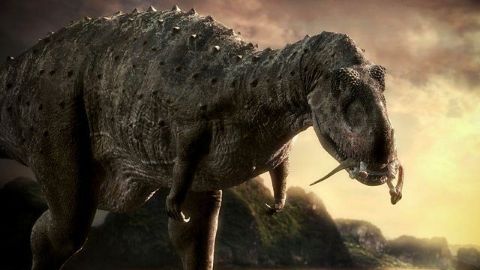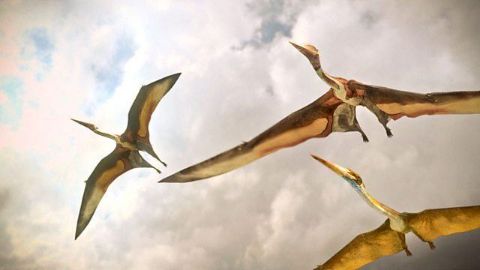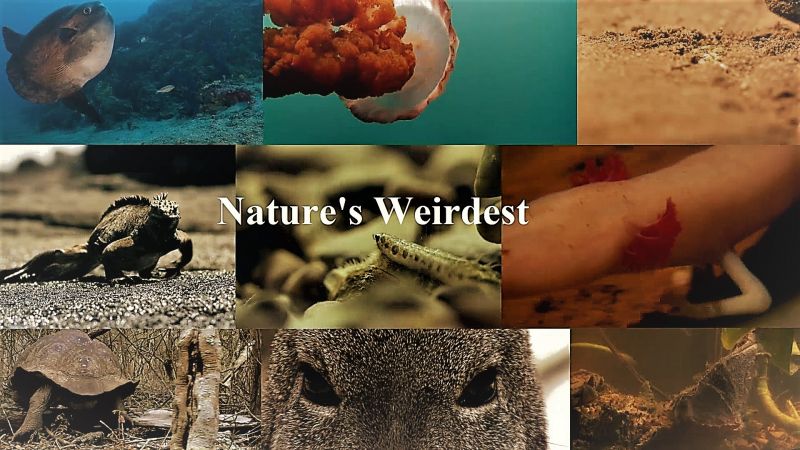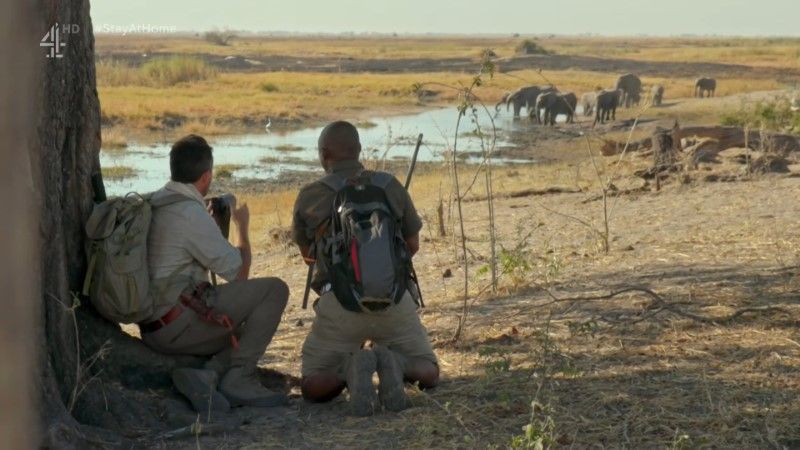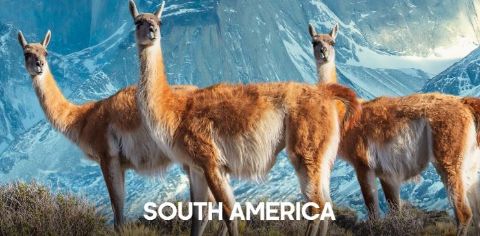Planet Dinosaur • 2011 • 6 episodes •
The series starts in North Africa, where two of the world's biggest predators once battled for supremacy. At 13m and seven tonnes, the carcharodontosaurus was a huge beast, a gigantic lizard-like carnivore with shark-like teeth over six inches long. It was an efficient hunter that would slash at its prey until it bled to death. But the discovery of an upper jaw in Morocco revealed an even bigger carnivorous killer - spinosaurus. Four metres longer than Tyrannosaurus rex, spinosaurus is thought to have been one of the biggest killers to ever walk the Earth. But unlike the meat-eating carcharodontosaurus, spinosaurus mainly ate fish, living and hunting almost exclusively in the water. Like all predators that share an environment, the two may once have had to compete for food. Planet Dinosaur takes a look at what one such deadly battle may have looked like and finds out which giant beast would have been most likely to survive a fight to the death.
2011 • Nature
The second episode of the documentary series takes a look at bizarre and extraordinary feathered dinosaurs, many of which have only just been discovered. These feathered beasts are revolutionising our understanding of life on Earth as they blur the boundaries between what we know of dinosaurs and birds. China sits at the heart of the feathered dinosaur discoveries and is the home of one of the most unusual discoveries on Earth: the epidexipteryx. Only the size of a pigeon, this predator was the most bird-like of any dinosaur and is the first known case of ornamental feathers. But feathers were not just confined to the small. From caudipteryx to sinosauropteryx and the 8-metre-long gigantoraptor, feathers may have been used for flight, for insulation or even to intimate and attract. These dinosaurs not only hint at how animals might have developed flight, but also suggest that dinosaurs may still live among us today - as birds.
2011 • Nature
The third episode looks at the last generation of killer dinosaurs - carnivores that took killing to a new level. By the end of the cretaceous period - 75 millions years ago - these gigantic and specialised hunter-killers had spread throughout the globe. In the southern continents it was the powerful and muscular abelisaurids that reigned supreme but it was the famous tyrannosaurids (or tyrant dinosaurs) that dominated in the north. Whilst the northern daspletosaurus hunted in gangs, using its highly developed smell and hearing to take down opponents like the horned rhino-sized beast, chasmosaurus, in the Southern hemisphere the small-skulled majungasaurus reigned. And though the sharp toothed majungasaurus was an efficient killer of the much smaller feathered rahonavis that did not stop it from occasionally turning cannibal and hunting its own.
2011 • Nature
This episode focuses on the Jurassic period, a time when the first giant killers stalked the Earth and lurked in the seas; a time when the slightest advantage meant the difference between life and death. In North America the iconic allosaurus, an ambush hunter with a lethal bite, dominated. Not even the heavily-armoured stegosaurus was safe from this killer, and incredible evidence reveals a glimpse of a vicious battle between these two giants. Life in Jurassic oceans was no easier; in 2008, a fossil was dug out of a frozen island high in the Arctic. It was a colossal marine reptile, twice as big as most ocean predators, at 15 metres long and weighing about 45 tonnes. This was Predator X. Its skull alone was nearly twice the size of a tyrannosaurus rex's, and its bite force unmatched by anything in the Jurassic seas. The balance of power between predator and prey is a fine one, as prey continually evolves different ways to avoid predators. But for the most successful and enduring predators, the battle to survive has always been tipped in their favour.
2011 • Nature
This episode of the documentary series focuses on the new giants, the heavyweights of the dinosaur world. It is only in recent years that experts have unearthed the biggest dinosaurs that ever lived. One monster eclipsed all others; more than seven times as heavy as diplodocus was the immense argentinosaurus - a single backbone was bigger than a human. For years, these giants were considered immune to attack from any predator - until the discovery of mapusaurus, a new giant killer whose fate appeared to be inextricably linked to argentinosaurus.
2011 • Nature
The final episode explores dinosaurs' extraordinary ability to survive. Featured dinosaurs include the bizarre magyarosaurus, which lived in the shadow of the biggest flying animal - hatzegopteryx - and showed an amazing adaptation to island life; and the weird nothronychus, a carnivore that gave up meat eating. This astonishing capacity to evolve into ever more diverse and bizarre forms meant that dinosaurs not only spread throughout the world, but also dominated life upon it for more than 160 million years. It was only an unprecedented extraterrestrial event that finally saw the end of planet dinosaur.
2011 • Nature




